India's top 10 famous temples
1. Badrinath Temple

Situated close to the Alaknanda River, the abode of Lord Badrinath is located in the Chamoli district, a small town of Badrinath (Uttarakhand). This holy shrine of Lord Vishnu forms a part of the four holiest sites (Char Dhams) in Hindu religion. It is also one of the four Chota Char Dham pilgrimage sites (comparatively minor pilgrimage sites). It is one of the 108 temples dedicated to Lord Vishnu (Divya Desams), which find mention in the works of Tamil saints who existed from 6th to 9th century.
The ancient abode of Lord Vishnu can be visited only between April to November as in the rest of the months the weather is too harsh for undertaking a pilgrimage journey. Two of the famous festivals related to the temple are
Mata Murti-Ka-Mela –in which the mother of Lord Badrinath is worshipped and it takes place in the month of September.
Badri-Kedar Festival –extending to 8 days, it takes place in the month of June and is celebrated in both the temples of Badrinath and Kedarnath.
2. The Konark Sun Temple
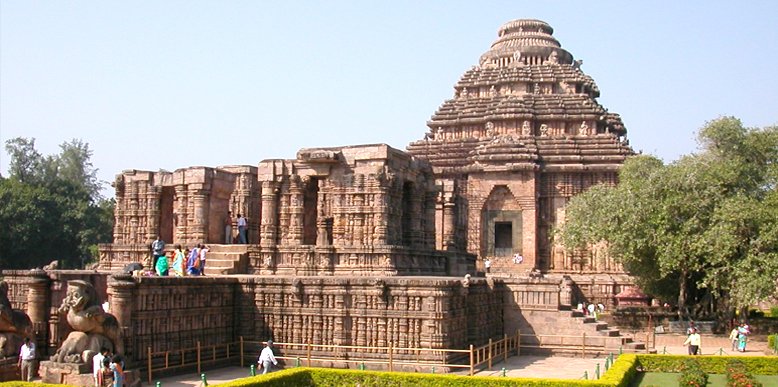
The Sun temple is situated in the small town of Konark, which is situated in the Puri district of Odisha. This marvel of architecture is dedicated to Lord Sun. And resembling his carriage, the temple has been built in the shape of a chariot, which has twelve wheels and is shown as being dragged by the seven horses.
The temple is believed to be constructed in the 13th century by a king called Narasimhadeva. Like with most things in India, this temple too has connections with a few legends. As per one of the legends, God Krishna cursed, one of his own sons with leprosy. To seek penance, Samba worshiped Lord Sun (Surya) for a period of twelve years. Pleased with his devotion, Surya healed him. Samba made the Sun temple in return to express his gratitude.
The mesmerizing beauty of the place was best summed up by the Rabindranath Tagore through these words: ‘Here the language of stone surpasses the language of man.’
3. Brihadeeswara Temple

Also known as Peruvudaiyar Kovil and RajaRajeswaram, this 11th century temple was built by the Chola emperor Raja Raja Chola I. Dedicated to Lord Shiva, Brihadeeswara temple is the largest temple in India that is situated at Thanjavur city of Tamil Nadu.
Cholas are known for their majestic and splendid scale of structures. The opulence and artistic proficiency of Cholas is well reflected in the grand and magnificent architecture of the temple. Made entirely of granite stone, it was built as per the principles of Vaastu Shastras and Agamas.
The most remarkable thing related to the architecture of this UNESCO World Heritage Site is that it doesn’t leave any shadow on the ground at the noon time. The millenary celebrations of its construction took place in 2010 amid many enthusiastic and grand cultural events.
4. Somnath Temple
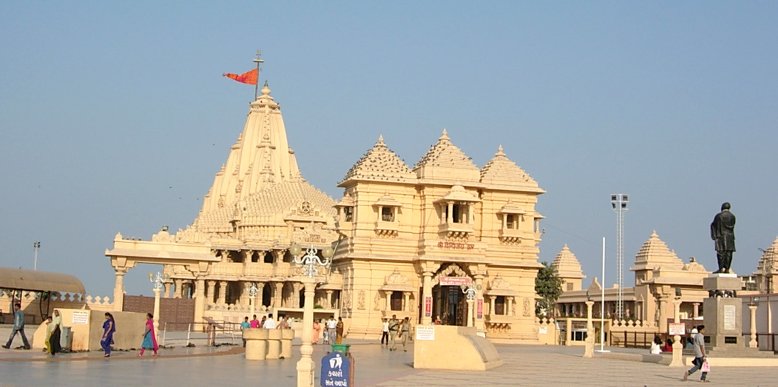
This is one of the oldest pilgrimage centres in India and finds mention in the ancient books, like Shivpuran, Skandpuran and Shreemad Bhagvat. Som refers to the ‘Moon God’, thus Somnath means ‘Protector of the Moon God’. According to a legend, Som got the temple built in the honor of Lord Shiva as it was Shiva who cured the illness, which was inflicted on him due to his father-in-law’s curse.
It is one of the most revered ‘jyotirlings’ among the 12 existing jyotirlings of India. The temple is located in Prabhas Kshetra in Saurashtra (Gujarat). Prabhas Kshetra is also the region in which, it is believed that, Lord Krishna left his mortal body.
Another interesting thing about the place is that it is built on the shore of Arabian Sea and in between the temple and the South Pole, in a straight line there is no land area. Somnath temple was destroyed and re-built many times. The place also has a Somnath museum, Junagadh gate, beach and a sound and light show to amuse the pilgrims.
5. Kedarnath Temple

Situated in the Himalayan range of Garhwal area (Uttarakhand), Kedarnath temple is one of the most sacred Shiva temples in the world. This holy abode of Shiva is said to be built by the Pandavas to atone for their sins committed during their battle with Kauravs. The temple was restored by Adi Sankaracharya in 8th century. It is one of the Chota Char Dhams of Uttarakhand and requires a pilgrim to walk a distance of 14 kms over the hilly surface. One can make use of a pony or manchan to simplify the journey.
Surrounded by the glaciers and snow-covered peaks and standing at a height of 3,583 m, the temple is closed during winters due to severe cold conditions. Even the idol of Lord Shiva is shifted to Ukhimath and worshiped there throughout the 5/6 months for which the extreme conditions prevail.
6. Sanchi Stupa
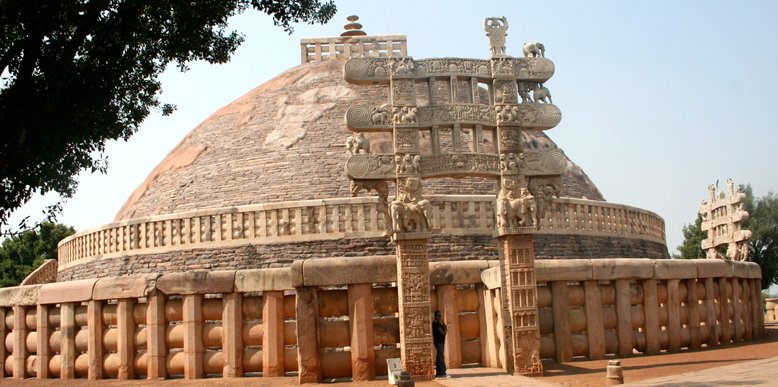
Sanchi is a village in the Raisen district of Madhya Pradesh, which is a home to several Buddhist structures built in between 3rd century BC to 12th century AD. The most significant of them all is the Sanchi Stupa, also known as the Great Stupa. A Stupa is a holy place of Buddhist, which is built in the shape of a dome that consists of relics of Buddha.
A UNESCO World Heritage Site this famous pilgrimage site in India was built by the great emperor Asoka in the 3rd century BC. There are four intricately designed gateways surrounding the Stupa known as Toranas, each individually symbolizing the four emotions of love, peace, courage and trust. The Great Stupa is 16 meters high and 37 meters in diameter and preserves the relics of Buddha.
7. Ramanathaswamy (Rameshwaram) Temple
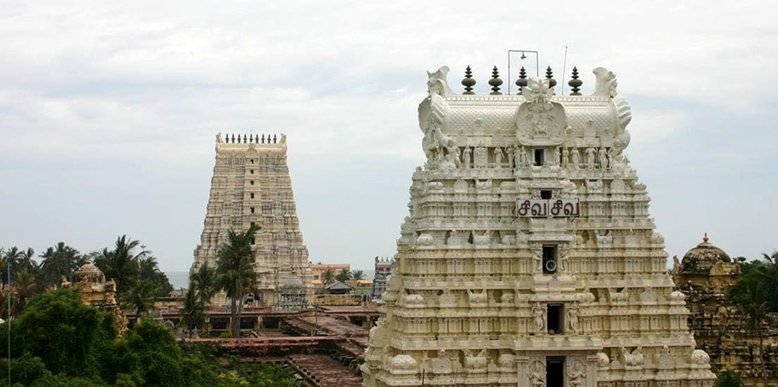
Rameshwaram (or Rameswaram) is a small island town in Tamil Nadu and is one of the four holiest pilgrimage places (Char Dhams) of the Hindus.
The reason for its being so sacred is the belief that Lord Rama along with his wife Sita first landed on its shore after defeating the demon Ravana (who was also a Brahmin). To seek atonement for killing a Brahmin, Rama wanted to pray to Shiva. Hanuman was sent off to Kailash to bring an idol of the God. In the mean time, Sita made a small lingam. The one made by Sita is called Ramalingam and one brought by Hanuman is called Vishwalingam.
As per the instructions of Lord Rama, Vishwalingam is worshiped before the Ramalingam, even today.
8. Vaishno Devi Mandir
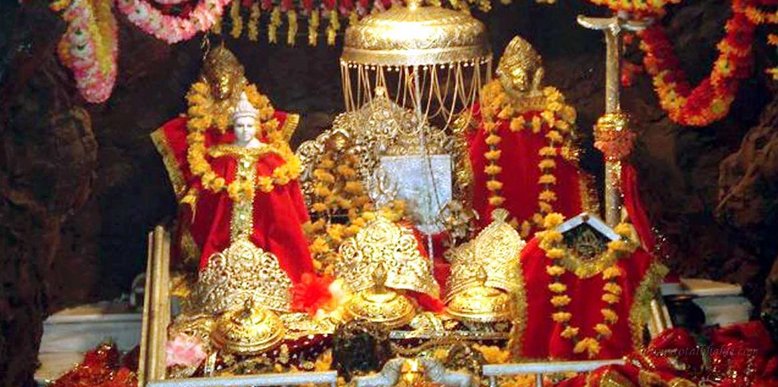
After a trek of about 12 km from Katra (base camp), one reaches the holy cave, which is the abode of Maa (mother) Vaishno Devi and is located at an altitude of 5200 ft in a mountain called Trikuta. It is situated in Jammu and Kashmir, near Katra town.
Vaishno Devi is present here in the form of three rock heads, called the Pindies, instead of a statue. Due to the strong faith of the people, every year millions of them come to take the blessings of Maa Vaishno Devi. It is said that it is Maa Vaishno who decides her visitors. It is she who calls her devotees to her doorsteps. Anyone making a successful journey to her shrine is there because of her wish. The shrine is open all year round.
9. Siddhivinayak Temple
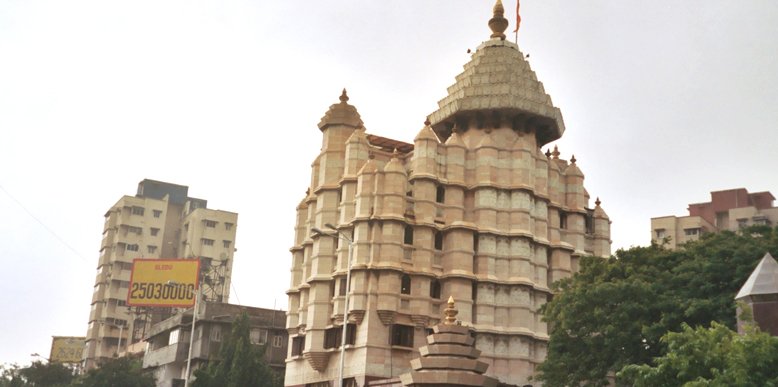
Located in Prabha Devi, Mumbai, Siddhivinayak Temple was built in the 18th century. Siddhivinayak or Lord Ganesha is the supreme deity of the temple and is famous for being the first one to be worshipped before commencing any new work or assignment. That is why he is also known as Vighnaharta (the terminator of impediments).
On the wooden doors of the shrine eight impressions of Lord Ganapati (Ashtavinayak) are carved. Siddhivinayak temple consists of one of the eight images of the God. Other distinct images are spread over seven temples situated in Maharashtra. The temple is visited by the devotees all days of the year but Tuesday is the day when maximum numbers of people come to pray to the Lord for good luck.
10. Gangotri Temple
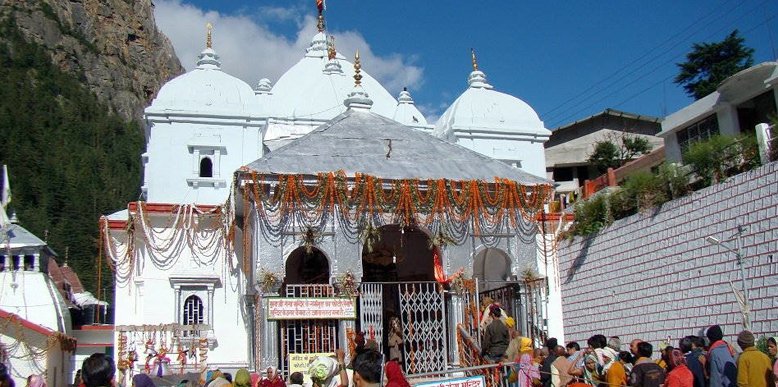
The sacred origin of Ganga Maa (mother) is worshipped at Gangotri temple, which is situated in the Uttarkashi district of Uttarakhand. A partially submerged Shivaling lying along the temple in the waters of Bhagirathi signifies the place where God Shiva entangled Ganga in his hair. Built in the 18th century the temple is made from the white granite.
The holy temple of Gangotri opens up on Akshaya Tritiya (usually falling in the months of April or May). On this occasion, an idol of Ganga Maa is brought back from the Mukhyamath temple (her winter abode), which is at a distance of 20 km. On Diwali, every year, Maa Ganga again travels back to the Mukhyamath temple.
You May Be Interested IN